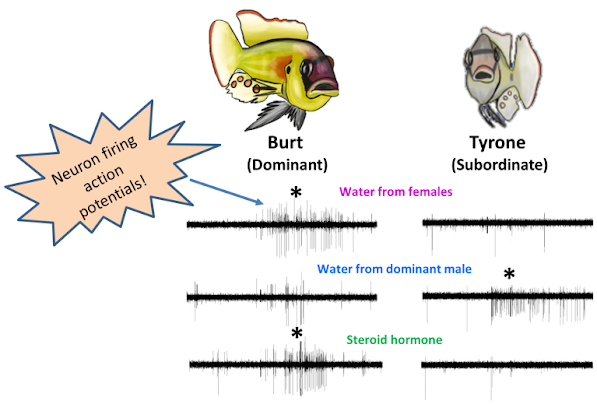Burt and Tyrone have Different Smelly Brains!
Now that you know we also use pee and olfactory signals to communicate with each other, I want to tell you about another experiment designed to test how the neurons in our brain work to understand these smells. The scientists put these little needles called electrodes in specific regions of our brain, and then pass water that contains different types of smells (or odors) over our noses to see how our brain responds. When the neuron they’re recording from gets important information from our olfactory epithelium, it fires what’s called an ‘action potential’ (this is caused by ions like sodium and potassium crossing the cell membrane through channels). The researchers can then compare this firing activity after application of these different smells to determine which ones might be most important to us!
In the first experiments, they’re doing these recordings in us males. Right now, I’m a dominant male, meaning that I successfully defend my territory, mate with the ladies, and sport this flashy bright coloration. But I wasn’t always dominant, and in fact, most of the other males in my home town, like Tyrone, are subordinate – they don’t have a territory or mate, look pretty faded, and get chased around a lot by dominant guys like me. Not only do we behave and look differently, but there are also lots of physiological differences between me and Tyrone. So, the scientists are asking whether the olfactory-sensitive neurons in our brains process smells differently when we’re dominant versus when we’re subordinate. Some of the smells they’re testing are amino acids (found in food) and steroids (found in urine). But they’re also testing more complex mixtures of chemicals that might actually be released from us fish. To get these fishy smell solutions, they place either a few ladies that are ready to mate, or a dominant male into some water and let them hang out for a while. Then they collect that water, which contains all of the smells released through the skin, gills, or through peeing!, and put them on our noses while they record from the brain.





Comments
Post a Comment